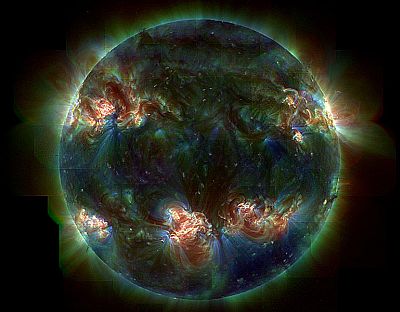Seven strange 'weathers' that exist in the solar system, such as 'wind speed exceeding the speed of sound' and 'rain of methane'

Extreme weather is a problem on the earth, but at the space level, extreme weather that is not comparable to the earth is occurring everywhere. Live Science, a scientific media, summarizes extreme weather events on different scales of planets in the solar system.
7 solar system worlds where the weather is crazy | Live Science
◆ 1: Over-Earth hurricane on Jupiter
The huge Great Red Spot on Jupiter can be seen on Earth with a telescope, but it is said to be about 18,000 km x 12,000 km to 40,000 km x 14,000 km, about the size of two or three Earths. I will. The Great Red Spot rotates like a hurricane and is thought to have taken root to a depth 100 times that of the ocean. Recent studies have shown that the Great Red Spot may be shrinking, but it has also been reported to be swallowing other hurricanes.
Jupiter's extreme weather events are not limited to the Great Red Spot. It is known that there are places where multiple cyclones are gathered in Jupiter's South Pole and North Pole.
Under the striped atmosphere of Jupiter, it turns out that there is an unimaginable world of the earth such as 'nine cyclones are densely packed' --GIGAZINE

◆ 2: Saturn's lightning bolt, which is 10,000 times stronger than the Earth
NASA's Cassini spacecraft, which orbited Saturn from 2004 to 2017, observed lightning during the day. NASA reports that the number of bolts in this lightning bolt is 10,000 times that of what occurs on Earth.
Saturn sometimes produces 300,000 kilometers of storms that cover the entire planet. Cassini is also observing the hexagonal jet stream at Saturn's North Pole.
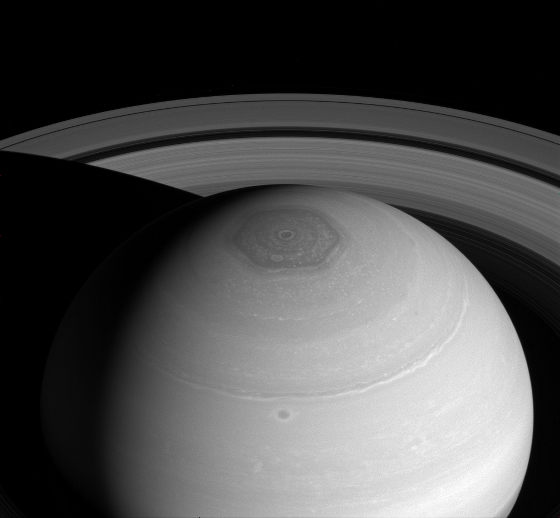
◆ 3: A solar storm that brings down the power grid
A solar storm is a phenomenon in which the solar wind is explosively emitted when a large-scale solar flare occurs in the sun, and its electromagnetic waves and particles are poured onto the earth. In many cases, solar storms do not affect life on Earth, but large-scale solar storms can disrupt the magnetic fields on Earth and affect the power grid. In fact, there were major solar storms in 1859, 1872, 1909, 1921, 1989, and 2012, and a major power outage in Canada in 1989.
You can read more about the mechanism and effects of solar storms from the following articles.

◆ 4: Venus's vortex that moves faster than the planet
In the South Pole of Venus, there is a huge vortex that covers Europe. According to the European Space Agency, this vortex moves at 400 km / h, which is 60 times the rotational speed of Venus.
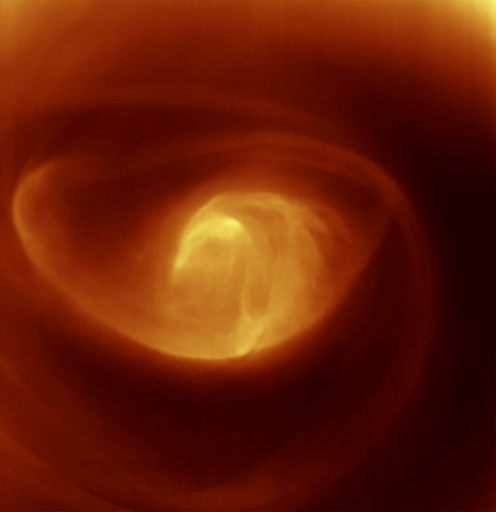
Venus is also covered with gas, and the greenhouse effect can cause the atmosphere to reach 465 degrees Celsius. Although it rains with sulfuric acid, it does not reach the ground because it quickly falls from the clouds and evaporates.
◆ 5: Neptune's wind faster than the speed of sound
Neptune, the planet farthest from the Sun, has the fastest winds in the solar system. The wind can reach speeds of over 2100 km / h, or 1.6 times the speed of sound. This wind caused a huge storm called the Great Dark Spot.
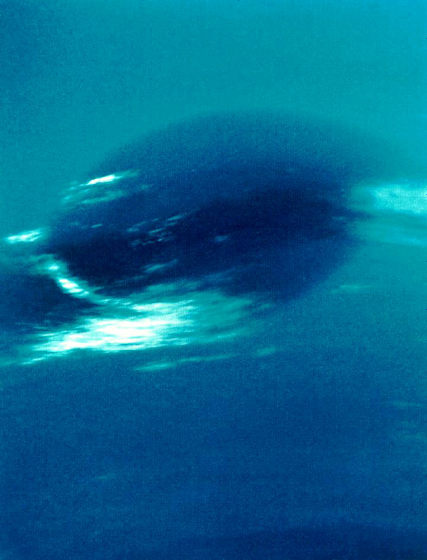
The Great Dark Spot was
◆ 6: Martian tornado
In the Sahara Desert and the Arabian Peninsula in northern Africa, strong storms called haboobs occur.

Haboob-like sandstorms occur regularly on Mars every few years. It is believed that this is because the sun heats the atmosphere and dust rises, but the reason why it develops into such a big sandstorm is not scientifically elucidated. This sandstorm frequently caused problems for
It is said that this storm sometimes causes a dust devil. A huge whirlwind with a height of 800 meters and a diameter of 30 meters that occurred in 2012 was also observed from the earth.
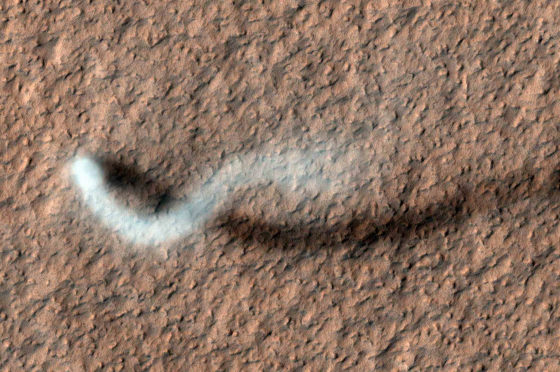
◆ 7: Rain of methane pouring down
Saturn's largest satellite,
In Titan, methane can evaporate from the surface to form clouds and then rain. According to Rajani Dhingra , a physicist at the University of Idaho, it rains slowly in Titan due to the weak gravity and thick fog. The methane cycle, which is not the Titan's water cycle , creates the huge lake 'Kraken Mare ' of methane and ethane, which is estimated to reach a depth of 300 meters.
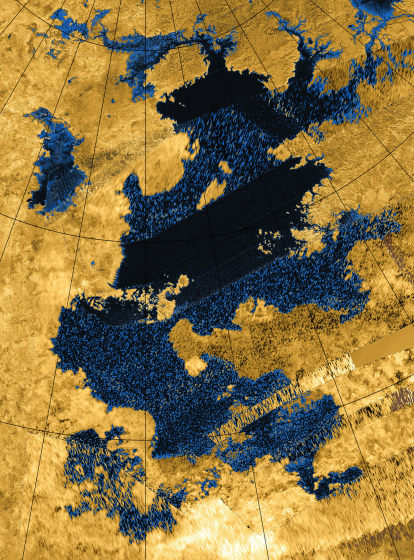
Related Posts:
in Science, Posted by darkhorse_log






